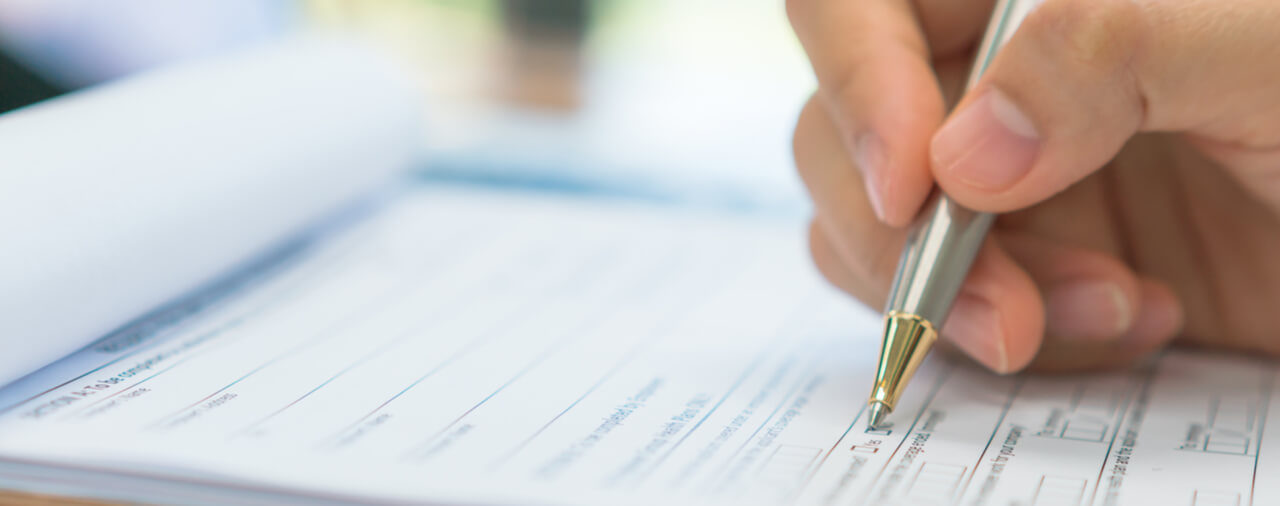- Introduction
- What is the Form I-131A?
- Distinguishing Form I-131A from Form I-131 Reentry Permit and SB1 Visa
- DOS Role
- Putting Together Form I-131A Application
- Adjudication and Approval
- Conclusion
Introduction
In 2016, the United States Citizenship and Immigration Services (USCIS) published a new form titled the Form I-131A, Application for Travel Document (Carrier Documentation). The Form I-131A allows certain lawful permanent residents abroad who have lost their permanent resident card or other authorization to reenter the United States to apply for a transportation letter or boarding foil to give to an airline in order to return to the United States. The Department of Homeland Security (DHS) may, in its discretion, also issue a travel document that has a validity period of 30 days. In this article, we will examine the use of the Form I-131A, who is eligible, when the Form I-131A is appropriate, and the effect of having a Form I-131A application approved.
In this article, we will discuss primarily the Form I-131A instructions for the 12/23/16 edition of the form. You may read the instructions for yourself here [PDF version]. Please note that when filing any USCIS form, an individual should refer to the USCIS website to ensure that he or she is using the correct edition of the form.
What is the Form I-131A?
The Form I-131A is applicable to certain lawful permanent residents and conditional lawful permanent residents abroad whose unexpired Permanent Resident Card or Reentry Permit has been lost, stolen or destroyed. The Form I-131A is not an application for a new Permanent Resident Card or Reentry Permit. Instead, the Form I-131A is an application for carrier documentation. Commercial carriers face fines if they transport aliens to the United States who are not authorized to enter. Accordingly, if the Form I-131A is approved, the DHS may issue a Transportation Letter or Boarding Foil to the applicant. This will show the commercial carrier that it may transport the individual to the United States. In its discretion, the DHS may instead opt to issue the applicant a Travel Document.
In addition to not being an application for a replacement Permanent Resident Card or Reentry Permit, the approval of a Form I-131A does not guarantee that the alien will be admitted to the United States or permitted any other form of entry into the United States. Instead, the U.S. Customs and Border Protection (CBP) inspects the alien upon his or her arrival at a Port of Entry.
Upon entry into the United States, the alien would still need to apply for a replacement Permanent Resident Card if his or her original card was lost or had since expired. This application is filed on the Form I-90, Application to Replace Permanent Resident Card.
Who May File the Form I-131A?
In order to file a Form I-131A, the individual must satisfy each of the following five points.
1. The alien must have been lawfully admitted to the United States for permanent residency or conditional permanent residency. In short, the alien must have been admitted as an immigrant. The Form I-131A is not for nonimmigrants.
2. The alien must still be a lawful permanent resident or conditional lawful permanent resident. He or she must not have lost such status through removal and must not have abandoned lawful permanent resident status.
3. The alien must have traveled abroad temporarily and without any intent of abandoning lawful permanent resident or conditional permanent resident status.
4. The alien must wish to return to the United States after a temporary absence of less than a year with a Permanent Resident Card or less than two years with a Reentry Permit.
5. The alien must not be in possession of a valid, unexpired Permanent Resident Card or other authorization to apply for admission to, or otherwise seek lawful entry into, the United States. The Form I-131A instructions note that scenarios described here may include when the alien’s Permanent Resident Card or Reentry Permit “was lost, stolen, destroyed, or mutilated.”
Please see our full article to learn about when an alien is considered to have “abandoned” his or her lawful permanent resident status [see article]. An alien who has been found to have abandoned his or her status would not be eligible to have a Form I-131A approved.
Accordingly, the DHS will not issue a Travel Document or otherwise approve the Form I-131A in the following circumstances:
1. The alien is physically present in the United States. The Form I-131A is only available for aliens who are abroad.
2. The alien is no longer a lawful permanent resident or conditional permanent resident.
3. The alien was issued a Travel Document that remains valid. However, there is an exception if the Travel Document was returned to the DHS or if it was lost, stolen, destroyed, or mutilated.
The Form I-131A explains that an individual with a valid regular Permanent Resident Card (10-year expiration date) or a conditional Permanent Resident Card (2-year expiration date) and a valid Form I-797, Notice of Action, indicating that status is extended, need not file the Form I-131A. Such individuals may use their Permanent Resident Card in conjunction with the Form I-797 to return to the United States.
Distinguishing Form I-131A from Form I-131 Reentry Permit and SB1 Visa
The Form I-131A must be distinguished from two somewhat similar types of applications.
First, a lawful permanent resident who is in the United States and who is traveling abroad for more than one year, but less than two years, may apply for a reentry permit from within the United States. The individual must be physically present in the United States when he or she files the Form I-131. This application is filed on the Form I-131, Application for Travel Document. A Permanent Resident Card is not valid for reentry into the United States for absences of more than one year, even if the individual did not intend to abandon or actually abandon permanent resident status. However, if the individual is granted a reentry permit, he or she may use it to reenter the United States after being absent for more than one year but less than two years. As we noted, an individual whose Reentry Permit is lost, stolen, destroyed, or mutilated, and who has otherwise maintained status and is seeking reentry within two years, may file a Form I-131A. It is important to not confuse the similarly named Form I-131 with the Form I-131A.
Second, a lawful permanent resident who remained abroad for over a year and did not obtain a Reentry Permit must apply for an SB1 special immigrant returning resident visa with the U.S. Department of State (DOS). An alien who remained abroad longer than two years after obtaining a Reentry Permit may also seek an SB1 visa. As we noted, such an individual would not be eligible to have a Form I-131A approved. The SB1 visa has its own set of requirements, which we detail in a separate article [see article]. An applicant for an SB1 visa should not file a Form I-131A.
No Refund if Applicant Should Have Applied for SB1 Instead of Form I-131A
The U.S. Department of State (DOS) Foreign Affairs Manual (FAM) includes an interesting point on the Form I-131A fee. At 9 FAM 202.2-5(C)(c)(1), the DOS states that the United States Citizenship and Immigration Services (USCIS) will not refund a Form I-131A fee if an applicant’s application for a boarding foil was denied because he or she had been abroad for too long. In effect, this means that an individual who applies for a Form I-131A when he or she should have instead applied for an SB1 visa will have no grounds for recovering the Form I-131A fee. For this reason, an individual should be cognizant of his or her situation when determining whether he or she should file the Form I-131A or apply for an SB1 visa.
DOS Role
The Form I-131A is processed by the USCIS. However, because the Form I-131A is filed by individuals abroad, the DOS plays a role in the process.
The FAM outlines the DOS rule in the Form I-131A process at 9 FAM 202.2-5(B). First, the DOS explains that a consular officer may issue a secure boarding foil to an LPR whose Permanent Resident Card or Reentry Permit was lost, stolen, destroyed, or mutilated, and whose Form I-551A was approved by the USCIS. As we noted, the Permanent Resident Card or Reentry Permit must have been valid at the time of the filing of the Form I-551A.
Second, the applicant must appear in person at a U.S. embassy or consulate to report the lost, stolen, destroyed, or mutilated Permanent Resident Card or Reentry Permit. At this appearance, the applicant may file the Form I-131A with fee to request a boarding foil. Please note that a similar process is required if the applicant is instead applying for an SB1 visa. At 9 FAM 202.2-5(C), the DOS explains that the lawful permanent resident must schedule an appointment using local post procedures to begin this process.
The FAM explains that the Form I-131A fee is not collected by the DOS. Instead, applicants must provide the receipt/confirmation page from payment prior to appearing at a U.S. Embassy or Consulate to file the Form I-131A. DOS may look to see whether the fee was paid and processed if the applicant no longer has access to his or her email. The fee must be paid prior to filing.
At 8 FAM 202.2-5(A), the FAM advises consular officers to encourage applicants to consult their air carrier prior to filing the Form I-131A with fee.
Putting Together Form I-131A Application
As we noted, the Form I-131A filing fee must be filed prior to filing the Form I-131A at a U.S. Embassy or Consulate. As of January 16, 2018, the filing fee for the Form I-131A is $575. The Form I-131A instructions explain that the $575 Form I-131A filing fee must be paid online via the USCIS online filing system. The Form I-131A fee is non-refundable, including if the applicant should have applied for an SB1 visa instead of filing the Form I-131A. There is no waiver of the Form I-131A fee under any circumstance.
When filing the Form I-131A or any other USCIS form, it is crucial to ensure that the most current version of the form and form instructions are being used. In general, an applicant may wish to consult with an attorney in filing the Form I-131A. In this section, we will provide a general overview of the Form I-131A instructions on the filing requirements for the 12/23/16 edition of the Form, current as of January 16, 2018.
Along with properly completing each part of the Form I-131A and paying the filing fee, the Form I-131A application must also include the following:
The applicant’s original passport (will be returned by the USCIS after it is no longer needed) and one copy of the passport’s biographic page;
Evidence of the applicant’s lawful permanent resident or conditional lawful permanent resident status;
A copy of the applicant’s tickets, itinerary, or any other evidence indicating the applicant’s last date of departure from the United States and the intended date of return travel to the United States; and
One color passport-style photograph of the applicant taken within 30 days of filing the Form I-131A (the instructions contain specific instructions for the photograph).
Adjudication and Approval
After receiving the Form I-131A, the USCIS will begin adjudicating the application. If the Form I-131A is not fully completed, the USCIS may reject or deny the application. The USCIS may request more information from the applicant in order to make a decision. Furthermore, the USCIS may request that the applicant appears at a U.S. Embassy or Consulate for an interview based on the application.
After reaching a decision, the USCIS will notify the U.S. Embassy or Consulate where the applicant filed the Form I-131A. If the application was approved, the applicant may procure a Travel Document or Boarding Foil at the U.S. Embassy or Consulate. If the application is denied, the applicant will have no grounds for appeal.
A Travel Document or Boarding Foil is valid for only 30 days after being granted. As we have discussed previously, the purpose of these documents is to indicate to an air carrier may transport the individual to the United States. Upon arrival, CBP will make a determination of whether the individual is eligible for admission or lawful entry. The applicant will have to file a Form I-90 to apply for a replacement Permanent Resident Card upon arrival in the United States.
Conclusion
The Form I-131A provides a way for certain individuals to travel to the United States after losing a Permanent Resident Card or Reentry Permit. In most cases, the question of whether an individual should file a Form I-131A or apply for an SB1 visa will depend on how long he or she remained outside of the United States. An applicant who has lost his or her Permanent Resident Card or Reentry Permit abroad may consult with an experienced immigration attorney for case-specific guidance on his or her situation.





